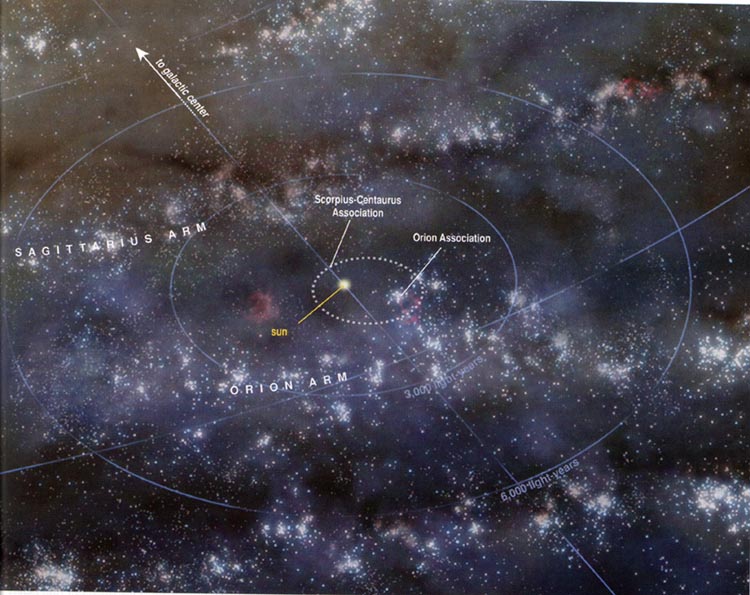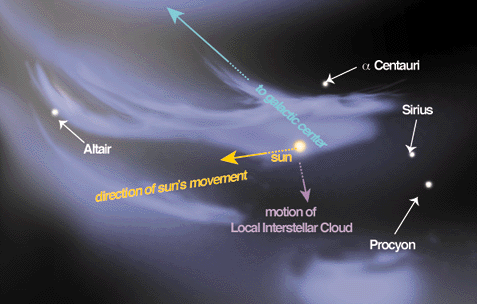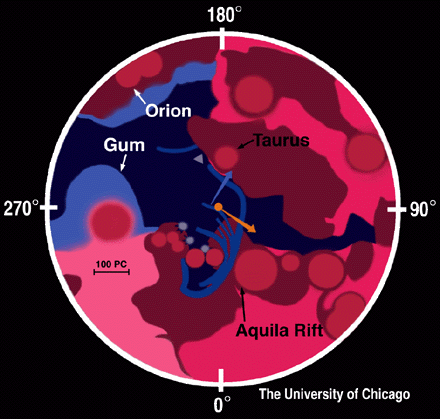
The Local Interstellar Medium
The density of the interstellar medium can vary widely, from over 100 atoms per cm3 to 0.001 atoms per cm3. Such a variation would result in a change in the ramscoop radius by a factor of 1000!
What is the typical interstellar medium like? Especially around G-class stars like our own? For example, it is not likely than an interstellar ship would pass through a hot HII region powered by an OB association: they are rare and would not support habitable planets.
Instead we focus on the local interstellar medium (LISM).
Mapping the LISM
Methods:
1) Soft x-ray emission.
The LISM is very thin (0.05 atoms cm-3) and very hot (1,000,000 K). This is atypical of the ISM –but just how atypical is unknown. Spectrum of the soft x-rays yields temperature, and surface brightness, density.
Density and temperature yield a pressure consistent with rest of ISM, so an equilibrium phase.
2) Absorbtion.
Not easy to do with precision. Even for nearby stars, optical depth for H Lyman-alpha line is 105 – 106. Absorption lines for metals (e.g. Ca, Mg) not reliable for high precision because of variance in abundancies.
Linsky et al use deuterium Lyman-alpha line. Optical depth for nearby stars is approximately 1. D/H ratio approx 1.5 x 10-5 consistently and well-studied because of significance to primordial nucleosynthesis.
3) Backscatter of solar UV from Local Interstellar Cloud ("Local Fluff").
Local maps

Maps of Local "Clouds" (within a few parsecs)
"Local Fluff" is 0.3 atoms cm-3 and 7000 K


Map of Local Bubble
Defined by H column 1019 cm-2.
Ranges in distance from 30 pc to 200 pc. Volume that of sphere with radius 100 pc. Most of ISM in Local Bubble is 0.001 – 0.05 atoms cm-3 and 1 million K.




Go to next section: ism3.htm